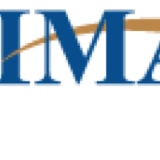Title Page
-
Job number
-
Client
-
Conducted on
-
Location
-
Site contact
BYDA/ EXISTING SERVICE PLANS
-
BYDA cover page and plans
-
Existing drawing/plans provided
Area
-
Scope
-
Services located
- Water
- Gas
- Electricity
- Telecom
- Sewer
- Stormwater
- Petroleum
- Rms
- Verizon
- Unknown
- Fire service
- Sydney trains
-
High pressure gas
-
When digging with in 3 metres of high pressure gas main, Jemena or asset owner is to be contacted prior to ground disturbance.
Call 1300137078 -
Ausgrid or Eendeavour Energy transmission
-
When digging with 3 metres of transmission cables, Ausgrid or Endeavour Energy to be contacted prior to ground disturbance. Ausgrid call 49510899 for endeavour energy call1800027253.
-
Optus in own duct
-
When digging within 3 metres of Optus asset (not in third party duct), an Optus accredited standby is required onsite. Utility mapping are accredited Optus standby.
-
Optus Southern Cross
-
When digging with in 5 metres of optus southern cross cable, call alan corner on 0400300337 prior to any ground disturbance.
-
Photos of located services
-
Services located comments
-
Photos of Services that require attention (QL-D)
-
Services that require attention (QL-D)
Sign off
-
Client onsite
-
Walk through site completed
-
Client signature
-
Locator signature
Disclaimer
-
Limitations for Subsurface Utility Information (SUI)
Utility surveying is a professional service defined in Australia by the Australian Standard Classification of Subsurface Utility Information (SUI), AS5488.1-2019.
Utility Mapping conducts all utility investigations and surveys in accordance with the Australian Standard. The Standard identifies four Quality Levels and specifies the following tolerance levels for typical site conditions:-
> QL-D Tolerance on accuracy does not apply, used for suggestive presence only
> QL-C +/– 300mm horizontal (minimum of relative spatial position)
> QL-B +/ – 300mm horizontal and +/500mm vertical
> QL-A +/– 50mm.
Exact utility locations cannot be guaranteed unless utility information from each of the Quality Levels is collected, and the utility is visually exposed and surveyed (QL-A).
Quality Level D
Provides a basic level of information through the collection of data from existing utility records. Utilities that are present on site, however not identified on DBYD plans or other available plans or information, will be referred to as ‘undocumented’ utilities. All reasonable effort will be made to detect and map ‘undocumented’ utilities that may be assumed present from surface features, to the required quality level within the limitations of our equipment, however, it cannot be guaranteed that all ‘undocumented’ utilities will be identified.
Quality Level C
Visible surface features are correlated with existing utility records. Utility Mapping will endeavour to locate and identify all utility related surface features, however the relevant utility owner must confirm utility ownership. Documented utility-related surface features which cannot be confirmed or identified, will be marked as ‘buried’.
Quality Level B
Quality level B establishes the horizonal position of existing underground utilities through surface geophysical methods.
Traditionally, electromagnetic detection is used for conductive utilities, and Ground Penetrating Radar (GPR) is primarily used for non-conductive utilities. Both methods have limitations and can be affected by the following, but not limited to:-
> Depth of utilities;
> Quantity of underground utilities within close proximity to each other;
> Soil/geological conditions;
> Material conductivity and other geological anomalies that may distort electromagnetic and GPR frequencies;
> Existing terrain of the site (i.e. surface condition, vegetation cover, reinforced concrete, surface water).
The effectiveness and accuracy of GPR is highly dependent on the surface conditions and the composition of the material being scanned. Utility Mapping is unable to guarantee the suitability of the material and composition for GPR, and this may result in an unsuccessful and inaccurate analysis in the identification and mapping of live or abandoned utilities.
Other environmental factors that may affect the transmission of GPR energy into the ground is the presence of groundwater or moisture. The depth and size of utilities will also affect results.
Utility Mapping will communicate any issues that may arise and will discuss options available to achieve the scope of the project.
Quality Level A
Quality Level A investigations provide the highest level of accuracy available, and involves the exposure of underground utilities for mapping through non-destructive methods.
The characteristics of underground features including type, size, condition and material can be captured.
Quality Level A information is achieved only at the point of exposure, all interpretations of linework between exposure locations will be as per the nominated Quality Level.
Investigations can be limited by existing ground and geological conditions. Utility Mapping will not be responsible for the removal or excavation of rocks or other debris later than 150mm in diameter from potholes.
The depth of utilities may affect the ability to obtain accurate utility features at depths greater than 2.0 metres. If ground conditions inhibit the potholing process, Utility Mapping will communicate any issues and discuss alternative solutions.
For more information, contact Utility Mapping on 1300 627 746.
www.utilitymapping.com.au











